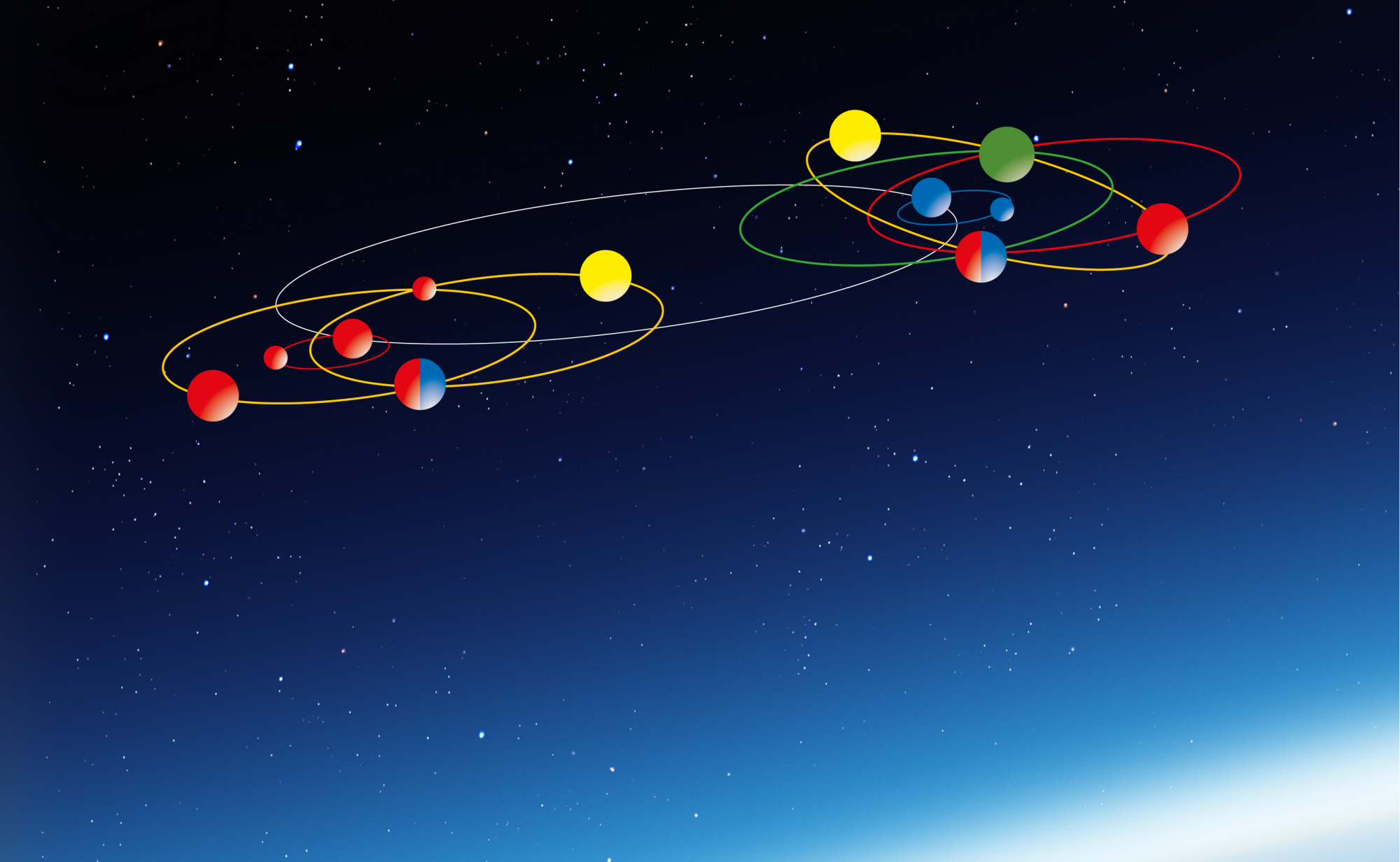The colors for the individual categories were chosen according to complementary-color theory, which is based on three dimensions of perception (with black-white, yellow-blue and red-green components), which the eye differentiates the best (Shapley 1990, Sharpe et al. 1990, Gegenfurtner & Sharpe, 1999).
The assignment of colors to the individual categories is not arbitrary, but chronological, according to the emergence of linguistic color expressions in the color theory of Berlin & Kay (1969).
Nominal concepts therefore get the color red, since this is, universally, the first linguistically coded color.
Adjectives —or conceptual dimensions—, and adverbs —or situational contexts— get, due to the fact that both either specify other elements (nouns) more closely or embed statements linguistically, the colors “yellow” and “green”, which are both results of synesthesia. Both colors originally denoted gustative (see sp. amarillo < vlat. amarellus < amarus ‘bitter’) or visual degrees of maturity (see sp. verde lat. viridis ‘fresh, young, immature’) of food.
Situations or verbs in the conventional tradition, also get, due to their special significance, a color that had been long perceived as a nuance of black (a primordial color), but whose linguistic coding found its way into the various languages relatively late and mostly only via language contact situations (cf. sp. azul < arab. lāzawárd ‘Lapislazuli’; French bleu < germ. root *bláwu ‘pale, pale’, Knausen (2012), Roberts & Pastor (2017), www.cnrtl.fr/etymologie/, www.etymonline.com).
The fact that situations exist in different degrees of grammaticalization (cf. “have” as full verb, temporal auxiliary and transitive copula) —whereby the question arises whether here one and the same verb is present or already different variants exist (Eco, 1968)— can be well illustrated by contrasting differences in the linguistic coding by shading blue tones:


